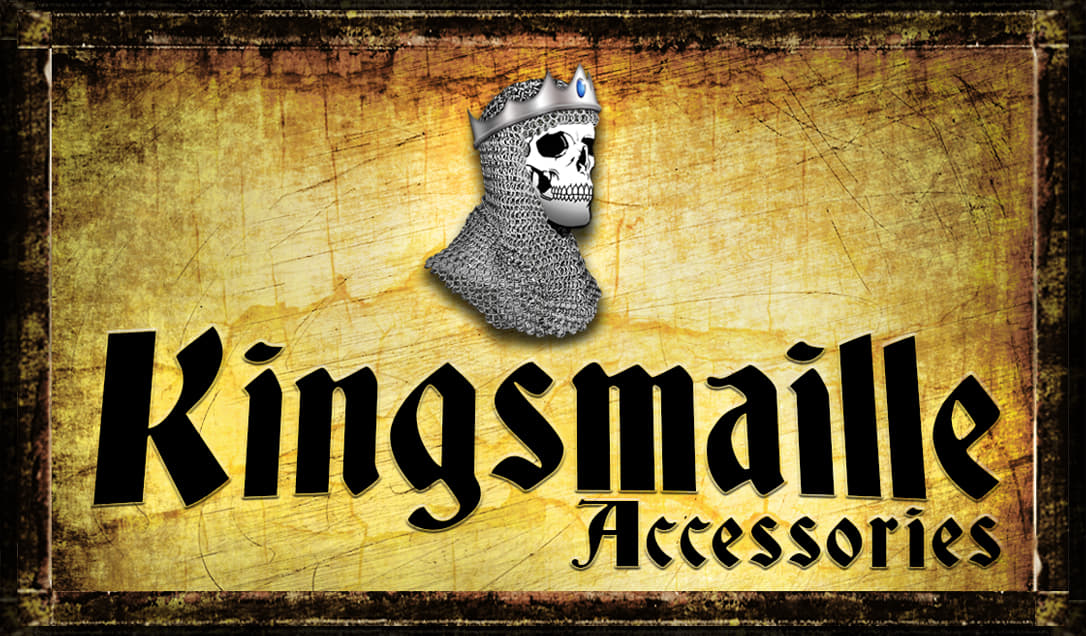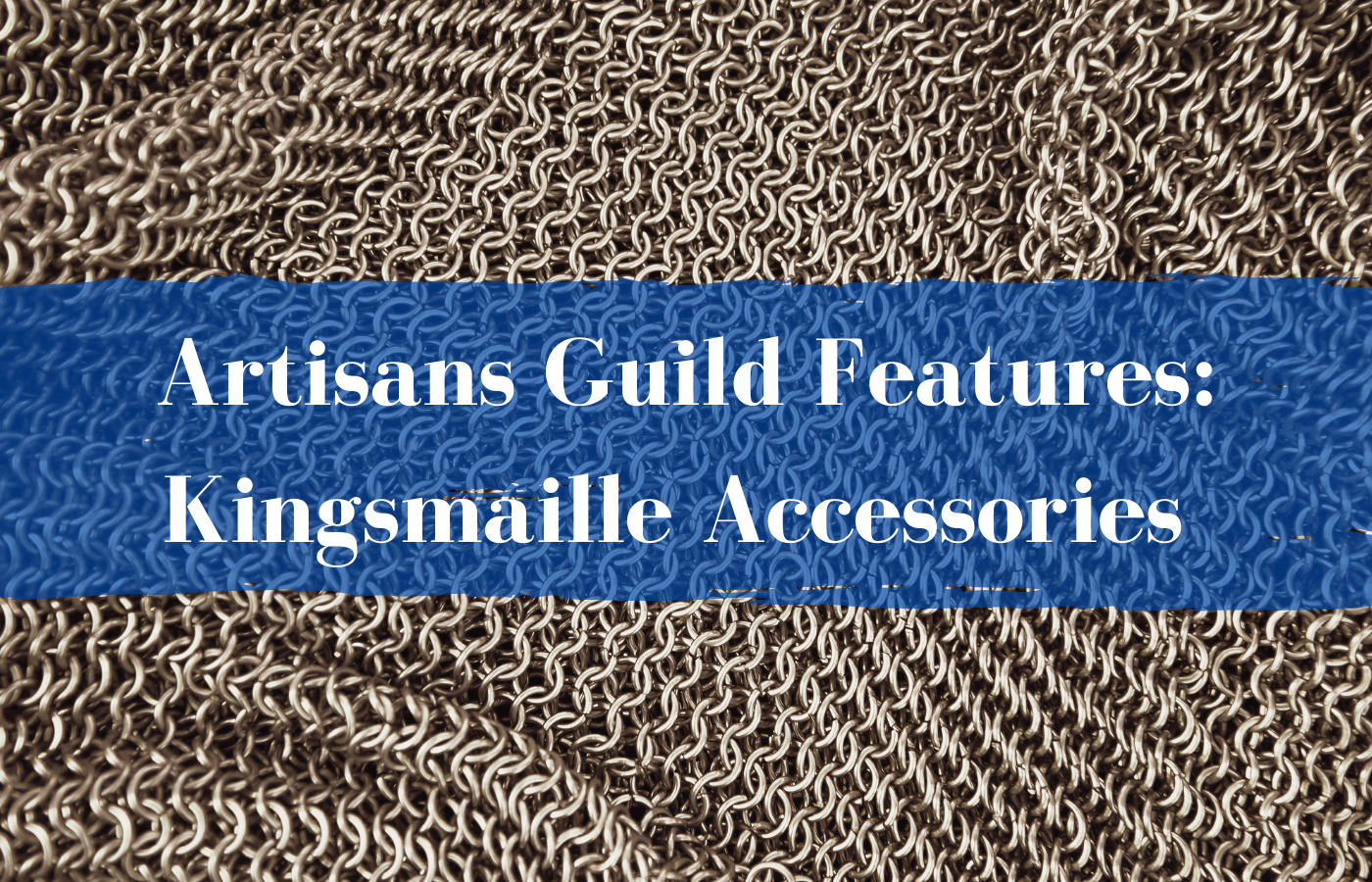 Hello, and welcome to Meet the Artisans, a series where I get to know the talented craftspersons that make up the Variant Ventures Artisans Guild! So far, I have spoken to several of our gifted craftspersons. This week I talked to Artisan Member Kingsmaille Accessories!
Hello, and welcome to Meet the Artisans, a series where I get to know the talented craftspersons that make up the Variant Ventures Artisans Guild! So far, I have spoken to several of our gifted craftspersons. This week I talked to Artisan Member Kingsmaille Accessories!
J (he/him): What can you tell us about Kingsmaille Accessories?
Alex (he/him: Kingsmaille Accessories is all about HEAVY METAL! And by that, I don’t mean blaring guitars, insane double-bass drum beats, and screaming/singing into a microphone in an aggressive fashion, which I actually do enjoy listening to – gotta get my nerdy Power Metal fixes on a daily basis. We’re talking about chainmaille! Oftentimes when I tell people that I own and run a business where I make chainmaille, they come back with a question akin to, “So… you send people annoying spam emails where you have to forward it to ten other people to get rid of some curse or something, and you made a business out of it…?” I can’t help but laugh every time! Kingsmaille Accessories is all about the designing, creating, and crafting of chainmaille armor, jewelry, accessories, gaming implements, inlays and more! I came up with the name as an homage to the “kinged” chainmaille weave pattern, which is pretty much just a basic pattern that is doubled-up to make it heavier and stronger. I guess the fact that my last name is ‘King’ didn’t really hurt either, eh?
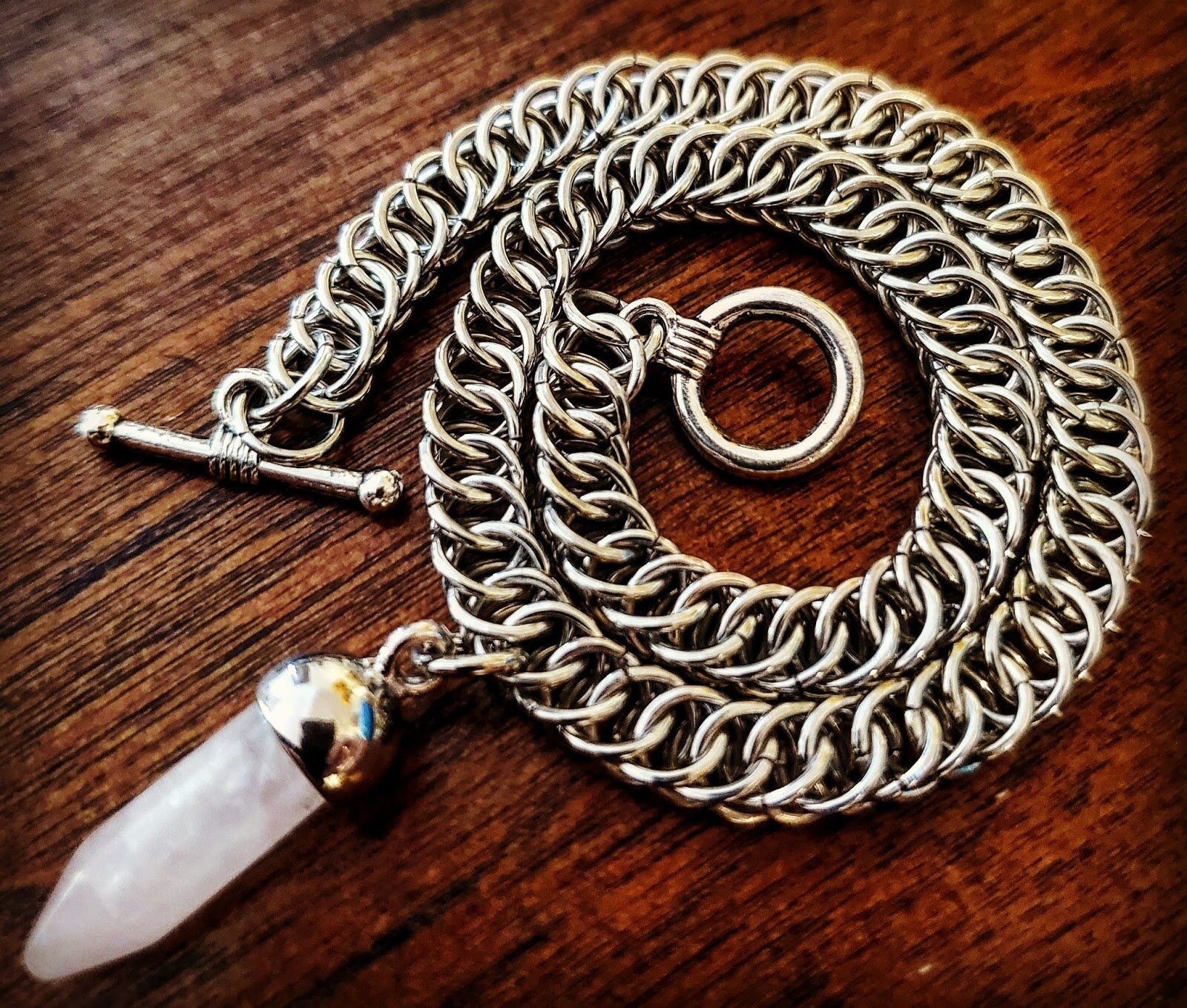
J: How did you get into working with chainmaille?
Alex: I have always been incredibly nerdy/geeky. I’ve been playing and DMing Dungeons & Dragons and other tabletop RPGs for over 20 years, I read The Lord of the Rings trilogy when I was eight years old, I’ve been playing Magic: The Gathering since 2005, and have always had a soft spot for high fantasy stories and medieval timelines. Now, I am not saying that making chainmaille is a geeky profession, as blacksmiths of old actually made this as a form of armor for knights and warriors and kings, and people who are in this craft sometimes aren’t even “geeky” in your classic way, but I grew up with stories of knights and dragons and beasts of old where the heroes always wore armor and chainmaille was just a part of whatever fantasy realm I swept myself off to, so I mostly associate the craft with the geek and nerd communities.
I never really thought about making anything with my hands until I worked at a Renaissance Faire for the first time in 2011. As I had a moderate obsession with medieval times and The Dark Ages, I taught myself sword fighting, how to throw axes and javelins, and even how to properly use a bow. I started working at the weapon game booths and befriended some of the blacksmith vendors who had set up shop at the faire. They allowed me to learn a small amount of what they did there and I fell in love with the craft. Fast forward about three years and I stopped working at Faire. College, life, and my career really got in the way of my enjoyment of the arts and I was hardly able to do anything that wasn’t related to studies or working. I stopped playing and writing music, I stopped playing video games, I stopped writing D&D campaigns and stopped playing TTRPGs altogether. In a nutshell, ‘adulting’ got in the way of everything. Once I graduated college, I tried to pick it up again, having forgotten a lot of what I learned at Faire. I went to hardware stores to buy metal dowels and galvanized steel wire and started hand-wrapping my own rings and trying to re-teach myself different weave patterns, made myself a single dice bag, but it just wasn’t the same. I seemed to have lost my spark of joy for making things and just… stopped.
Fast forward again another two or so years. I was at my local game shop playing my favorite card game with some friends, as I did extremely often when the world was safe to do so, and I pulled out the dice bag I had made years prior. I remember finding it in a dresser drawer, thinking, “Huh. This is cool. I’ll bring this tonight”, filled it with d6’s, and brought it to the shop. The second I pulled it out, people started asking me where I got it. Once I told them that I made it, they asked me to make one for them. Three people immediately placed an order for one and I became known as the “chainmaille guy” in my local game shop community and my love for the craft was reignited. I got a few dice bag requests here and there, but I was always thinking of what else I could do with it, always jotting down ideas and pattern designs, always dreaming of what different styles and weaves I could come up with. In June 2020, I decided to make Kingsmaille Accessories a legitimate business, but it wasn’t until a month later, when a person who was very dear to me passed away from cervical cancer, that I really started taking it seriously. In her memory, I designed and started weaving cancer awareness ribbon keychains and bracelets in all sorts of colors to represent almost any type of cancer. 80% of proceeds from each purchase goes directly to cancer research. These items took off in a popularity that I couldn’t even fathom.
What started out as pretty poorly made galvanized steel dicebags has grown into anklets, necklaces, bracelets, headbands, huge inlays, wallet chains, and keychains made of all different kinds of metals from aluminum to stainless steel to titanium, niobium, brass, bronze, copper, you name it!
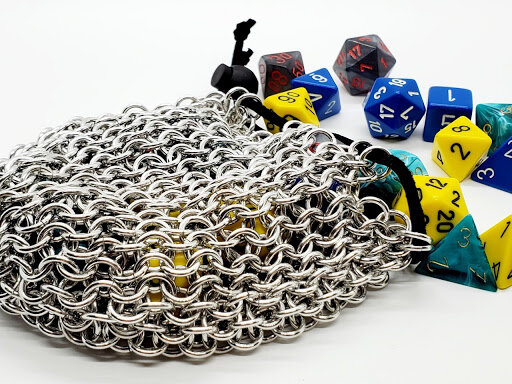
J: How do you come up with your designs?
Alex: Because of how old this craft is, almost none of the weaves themselves are entirely of my own original design. There are literally hundreds of different patterns that people use and have been using for years and years, so coming up with something that is completely original is not an easy task to accomplish. However, all of the color patterns and actual execution of each of my projects is almost entirely my own. Sometimes I’ll see a weave someone else has done and go “I can do that!”, then change the color pattern and tweak certain things within the pattern to make it different. Sometimes I’ll take a simple weave, turn it on itself and then bend it into weird shapes to try to make something a Kingsmaille Accessories original. I think of themes, like Hogwarts Houses or things from Magic the Gathering lore and make entire lines of products based on those ideas. For my inlays, they’re usually a picture or a design that’s already created and then I break that design down, figure out how it would work for chainmaille, and build it back up to fit the geometrical pattern that it’s restricted to.
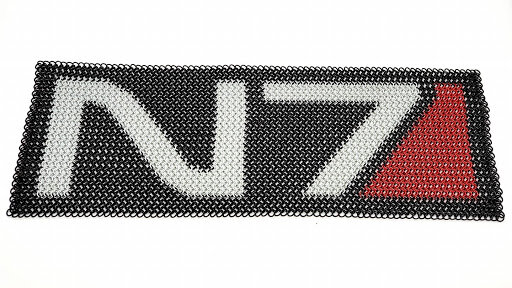
J: What do you feel sets you apart from other artists?
Alex: Although there are thousands upon thousands of chainmaille artists, we are still so far and few between. That’s become apparent to me when I talk to people about it and they have no clue what I’m talking about and don’t even know that the craft exists. Where painters or illustrators may have an entirely free canvas to start on and can go about making patterns and shapes that only the mind can comprehend and “put to paper” with almost literally any color combination you can think of, chainmaille artists, in most cases, are still restricted by only having access to and weaving singularly-colored circles into other singularly-colored circles. There are only so many ways that chainmaille can progress and so many ways that it can bend, and its restrictive nature is actually what I enjoy about it. “What ways can I make this design stand out?” “How can I ‘paint’ a picture that someone can see and recognize as a distinctive image?” “In what ways can I ‘blend’ two different ring colors that, when seen by the human eye, are seen as an entirely different color when woven together?” I have to think so far outside of the box to make sure that what I envision can actually come to life.
J: What is the largest piece you’ve ever created?
Alex: I have completed full chain shirts that have included over 60,000 rings. I’ve only recently gotten into creating inlays, but I have some ideas for some flags, wall-hangs, and tapestries that may end up being over 200,000 rings.
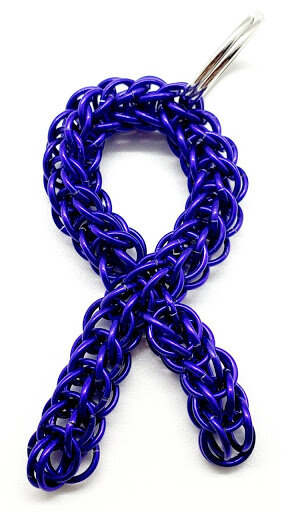
J: Any advice for others looking to get started in metals?
Alex:
- Start off slow – Try to learn the easiest patterns, such as European 4-in-1, first. Get the absolute basics down before you try to get into the more complicated weaves. There are plenty of tutorials out in the world, but getting the simplest of patterns down first can help in the best of ways to understand how chainmaille works as a craft.
- Get the proper tools – All you really need for chainmaille artistry is pliers and metal rings. Whatever you do, MAKE SURE THERE ARE NO TEETH ON YOUR PLIERS. This is insanely important if you don’t want to ruin, scar, or put burrs into your rings. Having pliers with teeth can damage even the strongest of metals if you’re not careful. As far as the different metals go, I’d start off with high gage, aluminum wire, as it’s probably the easiest to manipulate and weave together, and then work your way into the harder metals like steel or eventually titanium.
- Take breaks – Even the strongest of hands and wrists get tired. Unfortunately, this craft can lead to wrist problems and carpal tunnel at some point if you don’t take care of yourself, so making sure that you rest your wrists is one of the most important things.
J: Do you have any upcoming projects you are excited to talk about?
Alex: I am currently working on an inlay that will be made up of over 20,000 rings and will measure in at about 18”x18”. This project is a gift for someone who follows all of my social media accounts, so it will be kept secret until it’s done and posted to my socials!
J: What non-profit/charity can we help you signal boost?
Alex: I would like to promote The American Cancer Society. As I have had many people in my life succumb to this terrible blight, the furthering of cancer research means the world to me. With over 1.5 million active volunteers, this charity has been at it every single day for over one hundred years, doing anything they can to find a cure for cancer.
Contact Information

